
Weird West Review
The immersive sim is something like the dressed-up cousin of the RPG -- equally difficult to clearly define in words, but usually pretty easy to identify on the spot. When Arkane Studios veterans first formed Wolfeye Studios back in 2019 shortly before announcing immersive sim / action-RPG hybrid Weird West as their debut title, I found myself intrigued at the prospect of experiencing something as inventive as Dishonored or Prey, even if I was a little lukewarm on the premise itself. A supernatural fantasy reimagining of the American west was not really novel enough of a concept to immediately intrigue me at first, but during the leadup to the title's release I found myself more and more eager to see if Weird West could potentially be a hidden gem of the first part of 2022.
Despite my initial preconceptions, I quickly found myself genuinely enthusiastic about pretty much everything comprising the setting, story, and tone of Weird West. The art style was appropriately grimy and smeared, the lowly drawl of the voiced narration fit the spooky nature of the game perfectly while managing to avoid coming across as hokey, and the unorthodox nature of featuring multiple protagonists in the same setting allowed for a decidedly unique flavor of storytelling. This makes it all the more frustrating that Weird West was, unfortunately, one of the most tedious experiences I've played in several years.
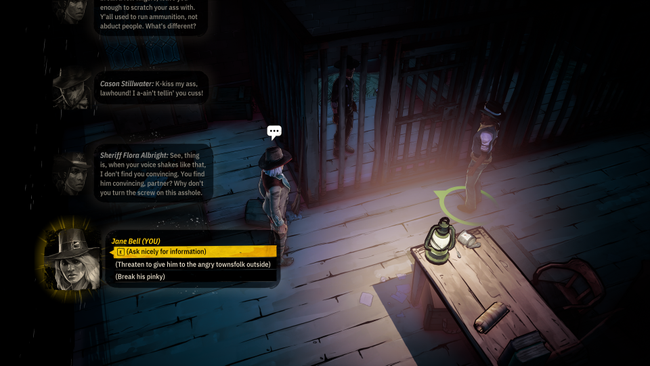
Weird West opens up with a bandit raid at the homestead of a former bounty hunter named Jane Bell. A gang of outlaws named the Stillwaters end up kidnapping Jane's husband, initiating a pretty typical scenario for a revenge plot. However, as Jane's story progresses, it quickly becomes apparent that this version of the wild west is no stranger to all sorts of supernatural shenanigans from flesh-eating monsters to vengeful ghosts and bipedal pigmen. While Jane's story initially plays this pretty straight -- dealing with a normal person simply trying to survive in a setting full of, well, weird circumstances -- the progression of the narrative immediately started to hook me beyond this base description.
To set the stage of how the story is presented, Jane's story begins with her dreaming about herself being cattle-branded by a cult-like group of masked figures, but she wakes up to find out that this brand has actually appeared on her neck in the waking world. For the first few hours past this introductory cutscene, the brand is largely ignored and its significance remains a bit of mystery.
However, once Jane's story of revenge against the Stillwaters concludes, the game immediately places the player into the body of another character -- this time a pigman named Cl'erns Qui'g. Interestingly, the brand persists, and there is even some suggestion that the memories of the previous branded character persist from body to body.
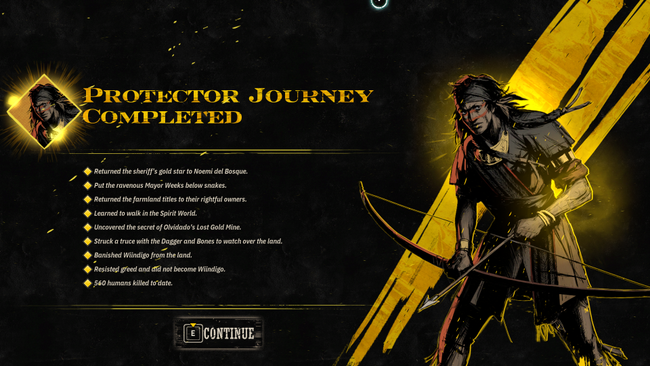
This goes on throughout the game's five major stories, progressing from the pigman, to a tribal protector, to a werewolf, and finally another cultist. Later characters can even recruit previous ones if they managed to survive their sections of the story, forming a sort of party of misfits trying to piece together their part in why they were all individually branded in the first place and their role in the larger story. It's an inventive premise that wasn't quite like any other game that I've played. Unfortunately, the way that this is otherwise implemented into the gameplay itself is endlessly frustrating.
To describe how this character-to-character transition never quite gelled with me from a gameplay perspective, I have to discuss how each individual character progresses during the course of each part of the story. Character progression really only takes place in three distinct ways: the active Abilities that you unlock to use in combat, passive Perks that provide bonuses to attributes such as how high you can jump or improve the effectiveness of using medkits, and upgrading and equipping gear you manage to find or craft for your weapon and armor.
However, the implementation of both Abilities and Perks are tied to items found in the overworld. Each item you happen to find basically becomes a point you can spend to make yourself stronger: Abilities are granted in exchange for Nimp Relics, while Perks are granted for trading in Golden Aces of Spades. These items can be found locked in chests or containers, held by enemies, or even just sitting on top of counters in tucked-away corners of buildings. On the surface, this seems like a good motivation to be thorough in exploring new areas, defeating and looting enemies, and combing the map hoping to find more items to effectively level up my character.
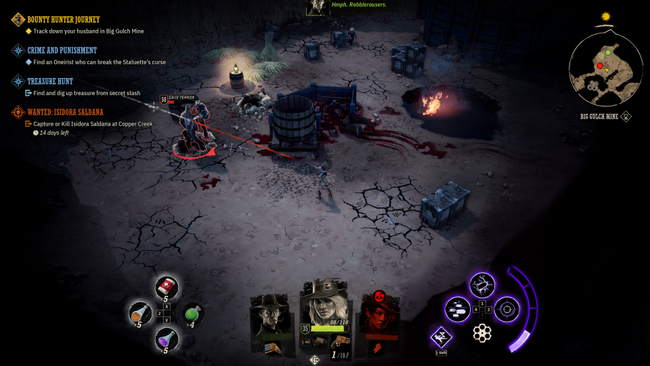
However, in practice, I quickly found this to be quite tedious for a number of reasons. Failing to thoroughly scour each location meant I might have missed some items tucked away in a room I happened to skip past, or even failed to loot an enemy that may have been unknowingly holding onto a Relic or Spade. Engaging in battles in and of itself is clunky and largely pointless, and it doesn't help that combat mechanics and location diversity also contribute to my lack of enjoyment here.
Most combat in Weird West plays a lot like a twin-stick shooter, aiming a ranged weapon such as a rifle or shotgun at incoming enemy mooks from an isometric perspective. This means that every combat encounter will require the use of limited ammunition stores, basically meaning that I would hope that each run-in with a swarm of outlaws, sirens, or ridgebacks would reward me with one of these Relic or Spade items, or otherwise feel like a resource drain without any real payoff. Combat locations are also very samey, with nearly identical underground mines or woodland outskirts making up the plurality of encounters throughout the game.
To cap this off, once you transition from one character to another, such as from the Bounty Hunter to the Pigman, any collected money, weapons, ammo, and abilities are reset as you inhabit the role of the new protagonist. You do manage to hold onto Perks from each character to another, but these are often uninteresting passive abilities that aren't exciting to unlock in the first place. Each character gets their own set of active abilities to use, but even these are often passive in nature, such as summoning an ally to fight at your side or making yourself immune to gunfire for a short duration. Even abilities that are common across all characters, such as the ability to fire rifles silently, are reset at each character transition.
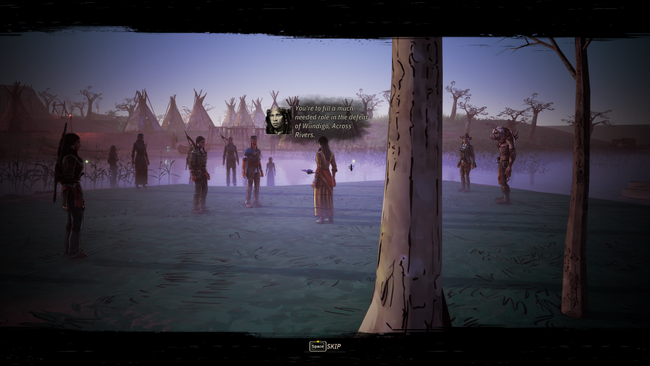
Weird West does offer a few ways to carry over items from previous protagonists forward through the course of the shifting perspective of the game, such as storing weapons in a bank or on the saddlebags of purchased horses, but this ends up feeling like a dull accounting exercise once you are aware that a character transition is pending. I found myself incentivized to dump all my best items in the bank, push through the story until I swapped characters, and then beeline to town on the next protagonist to gather all my items again. By the game's final two characters, I found myself not even bothering.
Even the game's various side quests and bounty system often result in basic monetary rewards, which are only really useful to stock up on ammunition or medkits, which then doesn't persist from character to character outside of these specific methods anyway. Altogether, it meant that I hardly ever felt incentivized to outfit my character in any meaningful way nor was I ever really motivated to spend time unlocking most of each character's abilities, knowing that I would have to start cold in a couple of hours anyway.
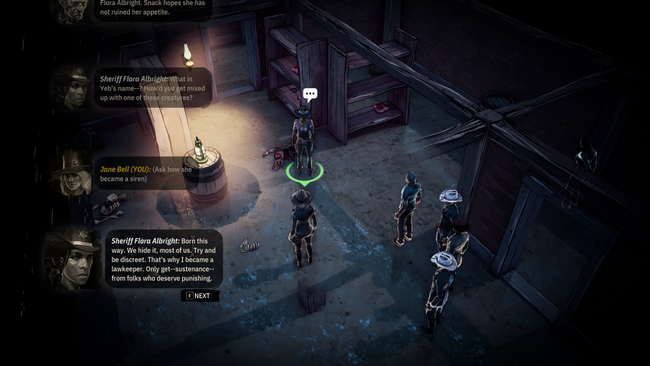
It's disappointing that the gameplay itself was so overtly dull because it undermines a genuinely interesting narrative. I was hoping to potentially find more immersive sim elements to counteract the lackluster combat and exploration, but even these fell flat for me. Sometimes I could fire at lamps hanging over barrels of oil or sneakily progress through an area methodically using silent takedowns, but often it was easier to just use whichever weapon had the most ammo at the time. Certain characters would potentially show up in battle on either side of the conflict depending on the actions taken in previous areas, but these never really felt meaningful or rewarding, and were more like cameos of NPCs that I had barely interacted with.
By the conclusion of Weird West, I thought that the experience was interesting and original enough to not have felt as though my time had been wasted on an unfun experience, but only just barely. The five character stories do manage to build up to a largely satisfying conclusion, and there is enough persistence from character to character to make at least some of the experience feel meaningful and sometimes even poignant. However, I also often found myself ignoring locations and battles and just main-lining toward the next story beat to the finish line because I simply wanted to see how the threads ended up wrapping together, looking for some sort of payoff. Weird West is a creative game full of neat ideas that just didn't quite come together in the end.